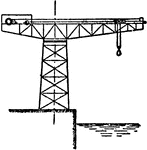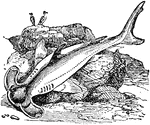Clipart tagged: ‘hammerhead’

Hammerhead Crane
The "hammerhead", or giant cantilever, crane is a fixed-jib crane consisting of a steel-braced tower…

Hammerhead Standing Near Water
"Scopus umbretta, the Hammerhead, of Madagascar and a large part of the Ethiopian Range, is purplish-brown,…

Hammerhead Shark
"Having a body like other sharks, but with a double snout like a double-headed hammer, and having an…

Hammerhead Shark
The eight species of hammerhead range from 2-6m long, and all species have projections on both sides…